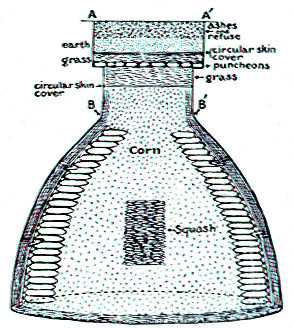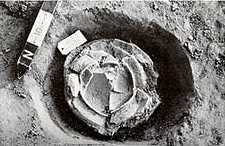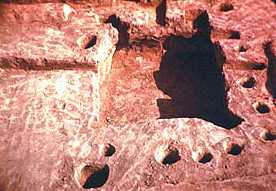
Schematic diagram of bell-shaped storage pit.

Crushed pot in storage pit, BBB Motor site.
Other facilities, notably storage pits, garbage pits, and hearths, leave more direct evidence of their function. Like pits inside the home, those outside its walls were dug out of the soft alluvial earth and typically displayed vertical walls, or less often a bell-shape. To prevent spoilage and loss to vermin, many foods were placed in baskets and storage jars in the pits. The pits may well have been lined with mats as well. Some pit floors were "tiled" with limestone slabs and may have been covered by mats or animal hides.

Excavation of a granary showing semi-subterranean
construction, Cahokia Tract 15B.